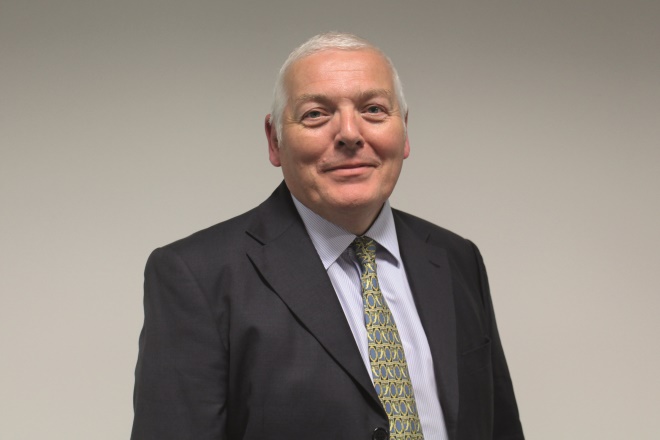
Shutterstock.com
Historically, relationships between community pharmacists and GPs have been narrowly based around the prescribing and dispensing interface, involving a limited amount of personal contact. Similarly, it has not been typical for the two sides to meet frequently to discuss topics of mutual interest. There are many reasons for this, including work pressures, but it can also be down to a lack of awareness of each other’s roles.
Recent moves to integrate health and social care have led some to suggest that more needs to be done to encourage collaborative working between GPs and pharmacists — something that Jay Patel, executive director of the Day Lewis Pharmacy Group, highlighted at a National Pharmacy Association webinar entitled ‘Improving GP and community pharmacy relations’ on 28 February 2017.
Why relationships need to improve
Patel says there are three core reasons that both parties should come together more often. “The first reason is for the patients,” he says. “People are living longer with more long-term conditions. They need pharmacy to work differently to meet their needs, which means they want a seamless journey through the health service and co-management of their care.”
The second reason is for the benefit of the NHS itself. “The NHS is our paymaster,” Patel explains, “and it is firm in its belief that integration is needed between community pharmacy and general practice to improve the quality of care we give to our patients, as well as for a financially sustainable NHS.”
This leads on to the third reason, which is about the survival of community pharmacy.

Source: Courtesy of Day Lewis
Jay Patel, executive director of the Day Lewis Pharmacy Group, explains explains why GPs and pharmacists should come together more often. The main reason is for patients, who ”need pharmacy to work differently to meet their needs, which means they want a seamless journey through the health service and co-management of their care.”
“If community pharmacists don’t get involved, then this integration won’t be as successful, but it will happen anyway,” Patel adds, “so who better to lead this than community pharmacy?”
The key thing to remember is that doctors and pharmacists share the same patient
The changing world of community pharmacy also means a constant challenge to prove the value of the sector. “The key thing to remember is that doctors and pharmacists share the same patient,” says Gordon Heeley, pharmacist at LloydsPharmacy in Nottingham. “Although we provide very different services, we have the same goal, which is to improve patients’ health and wellbeing, so it is very important to develop strong relationships with local GPs because it means we can be more joined-up in our approach.
“We rely on each other and there should be a mutual trust and understanding which helps us work together,” he adds.
Challenges in the relationship
On the face of it, this seems straightforward, but Blake Watson, regional support manager at Well, says demonstrating the value of pharmacy care can be “challenging, given that GPs and pharmacies generally operate inwardly, focusing on what we can do individually for patients”.
He adds: “We rarely work collaboratively as a team to achieve the best patient outcomes.”
Building good relations with a GP surgery that values community pharmacy can take time, but it’s a necessity
Add to that the complex forces that have impacted both GP and community pharmacy, such as increased regulations, new technology, extra reporting requirements, budgetary constraints and supply issues, it is easy to see how these pressures can create perceived – and real – conflict between the two professions.
Watson sees three main obstacles to improving GP relations: “The first involves uncooperative practices. Building good relations with a GP surgery that values community pharmacy can take time, but it’s a necessity.” Pharmacies need to educate GPs on the expertise and skills of pharmacists and identify ways to work together, to provide support to each other and increase efficiencies.

Source: Courtesy of Well
Blake Watson, regional support Manager at Well, says demonstrating the value of pharmacy care can be “challenging, given that GPs and pharmacies generally operate inwardly, focusing on what we can do individually for patients.”
A second obstacle is an acute lack of time, he says: “GP practices and community pharmacies are under intense pressure, mainly due to government funding cuts and increased workloads. It can be hard to find time for a lunch break, let alone to set up a meeting with your local surgery.
“The key thing is that the short investment of time more than outweighs any problems in store, so we can’t let this be an obstacle to building these important relationships,” he explains.
“Finally, pharmacies need to educate surgeries that their business model does not put profit before patient care, which can be a common misconception. Pharmacists and store teams must ensure that, wherever possible, they take the opportunity to prove the value of community pharmacy to the NHS.”
The solutions
Simon Moul – a regional pharmacy manager for Day Lewis and chair of Essex local pharmaceutical committee – is clear that it “can’t be about blame, it’s about finding solutions”.
“For example,” he says, “there aren’t enough GPs, so they can’t do the work expected of a surgery under their current manpower. But this doesn’t mean we are trying to poach their work; we are trying to help them and patients, sharing and shouldering the routine monitoring of patients, leaving GPs with diagnosis.”
Patel says the solution is to “keep things simple and go for the win/win” on a range of themes. It’s about sharing a common vision that makes the connection between people, processes and technology.
“For example, if a pharmacy is, or becomes a healthy living pharmacy, you will have a common vision with general practice, because the ethos of health and wellbeing will be ingrained into your offering. GPs will view this as in alignment with their vision, and your pharmacy team will gain confidence to engage proactively with local GPs – which builds credibility in the eyes of those who have not always understood what pharmacists do.”
Being aware of keeping communication as clear as possible is also vital, Patel adds. “Community pharmacy and general practice communicate with each other on a variety of issues, including prescription issues, repeat dispensing, pharmacy interventions, medicines optimisation and patient communications, so talk to the practice and find out how all of these impact each other.
Establishing regular contact can help to build strong links and enable the whole team to fully understand the benefits of community pharmacy
“Explain what services you provide in the pharmacy and what data you are capturing. Also ask what you can do to make life easier for them – is there any information they want you to pass on to the patient, or groups of patients. Ask how you can help them achieve their targets and goals.”
Principles of good practice
In the workbook titled
Improving Communication Between Community Pharmacy And General Practice
, the British Medical Association’s general practitioners committee and the National Pharmacy Association suggest some simple principles of good practice (below).
Community pharmacists should:
- be proactive in building a relationship: do not let the first time you talk to a GP be when you believe they have made a prescribing error;
- update local practices on any new services that you are providing;
- explain the community pharmacy contractual framework to local GPs, so that they understand what you are required to do;
- ensure you develop a relationship with the practice manager, and provide them with information on your current role and possible new services.
GPs should:
- proactively introduce themselves to local pharmacists. Could community pharmacists be invited to any practice meetings?
- keep pharmacies updated with any changes in personnel, services provided or practice policies that affect prescribing;
- explain the General Medical Services contract and quality outcomes framework systems to local pharmacists, so that they understand what you are required to do.
Success stories
Watson suggests it is important to engage with the whole surgery team, from the receptionist to the practice manager.
“Establishing regular contact can help to build strong links and enable the whole team to fully understand the benefits of community pharmacy,” he says. “For example, in one surgery meeting I attended, none of the six doctors present had heard of the new medicine service. I left a formulary with them, and they started directing eligible patients to the pharmacy, providing appropriate support to the patient while saving valuable appointment time in the practice.”
Simon has been working with a group of GPs and diabetic nurses to develop a service to identify and better serve diabetic patients, especially those not turning up for their GP appointments. He has also worked under supervision when a GP was off sick at a local practice.
“It’s about making sure the contact is worthwhile for the surgery,” says Heeley, “so they see an immediate purpose or benefit to the interaction that makes their or their patients’ lives easier.

Source: Courtesy of Celesio
Gordon Heeley, pharmacist at LloydsPharmacy in Nottingham, adds ”It is very important to develop strong relationships with local GPs because it means we can be more joined-up in our approach.”
“For example we rarely now send patients back to the GP with issues. We deal directly with the surgery while the patient is in the pharmacy. So if there is a problem with dose, supply, or safety concerns, these are things we can sort out on the phone, speaking with the on-call GP when needed. This prevents the patient from going back and forth and keeps pressure off reception in the practice, keeping queues down and allowing issues to be solved speedily.
“We also alert GPs to concerns following home delivery of medicines where a vulnerable person may not be answering the door or appears unwell. We also offer home domiciliary medicine use reviews and GPs can ask us to visit patients they have concerns about — usually in relation to optimising their medicine usage and then feeding back post visit.”
“We alert GPs to the cost when ordering non-standard items and if there is a licensed product available — for example, with colecalciferol products — and we share information on stock availability, which can help in the prescribing process.”
With a shared interest in safe and effective prescribing, it is this ethos of greater team working within healthcare which can enable community pharmacy and general practice to develop better working relationships. Of course, these relationships — and the trust that is inherent in them — take time to build, but working towards win/win scenarios for general practice and community pharmacy means that pharmacists, patients and the NHS can all benefit, if you get it right.
Reading this article counts towards your CPD
You can use the following forms to record your learning and action points from this article from Pharmaceutical Journal Publications.
Your CPD module results are stored against your account here at The Pharmaceutical Journal. You must be registered and logged into the site to do this. To review your module results, go to the ‘My Account’ tab and then ‘My CPD’.
Any training, learning or development activities that you undertake for CPD can also be recorded as evidence as part of your RPS Faculty practice-based portfolio when preparing for Faculty membership. To start your RPS Faculty journey today, access the portfolio and tools at www.rpharms.com/Faculty
If your learning was planned in advance, please click:
If your learning was spontaneous, please click:


